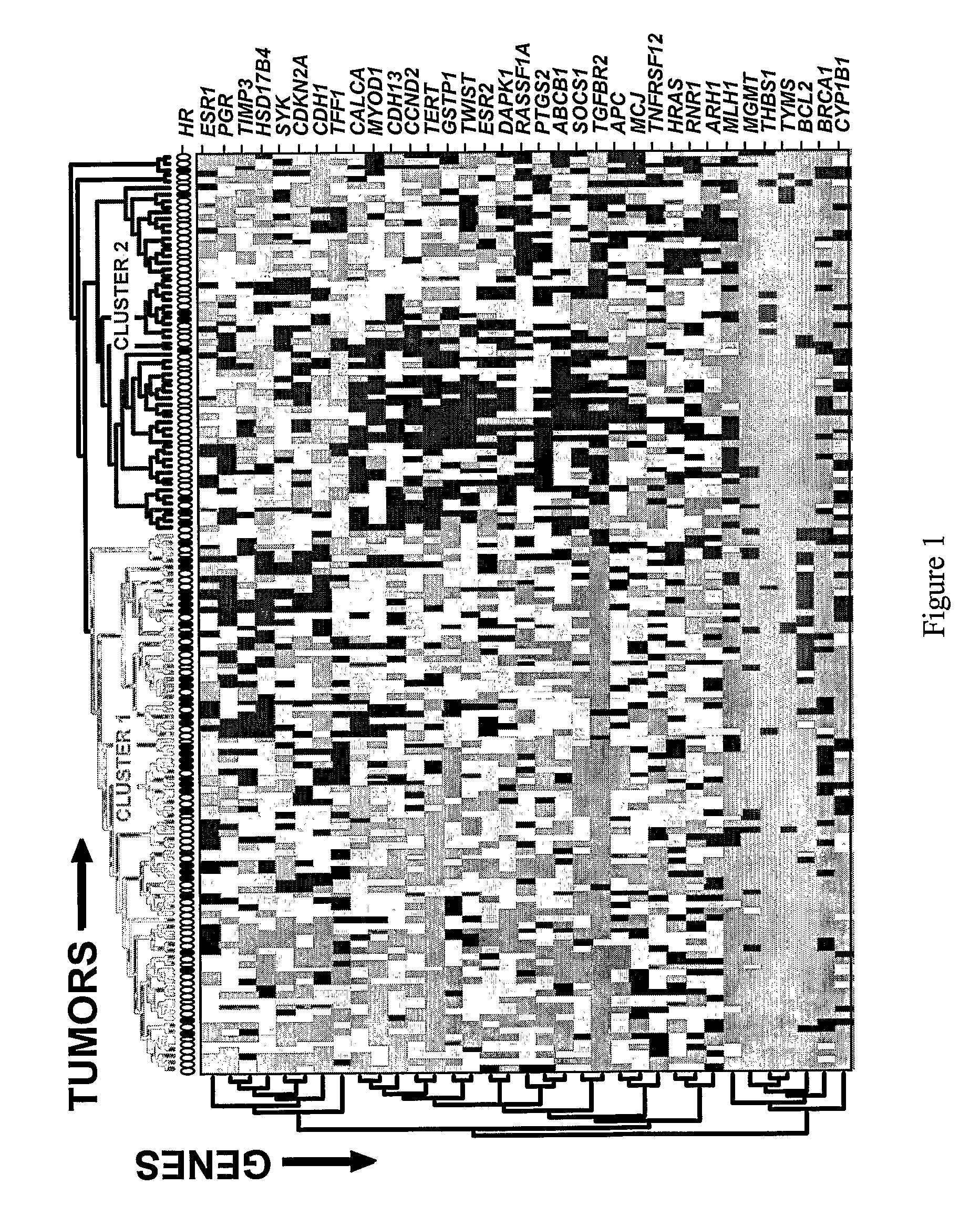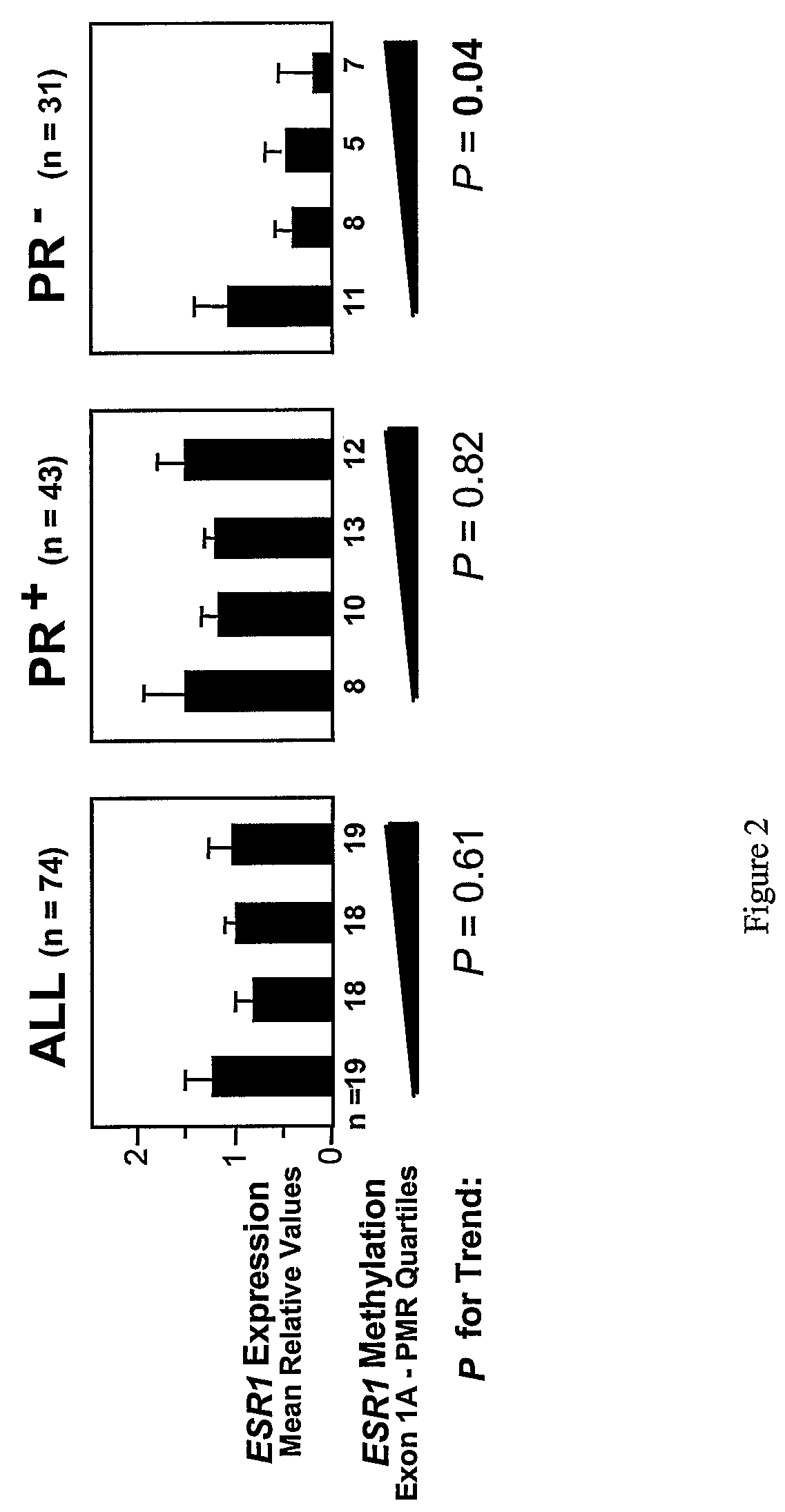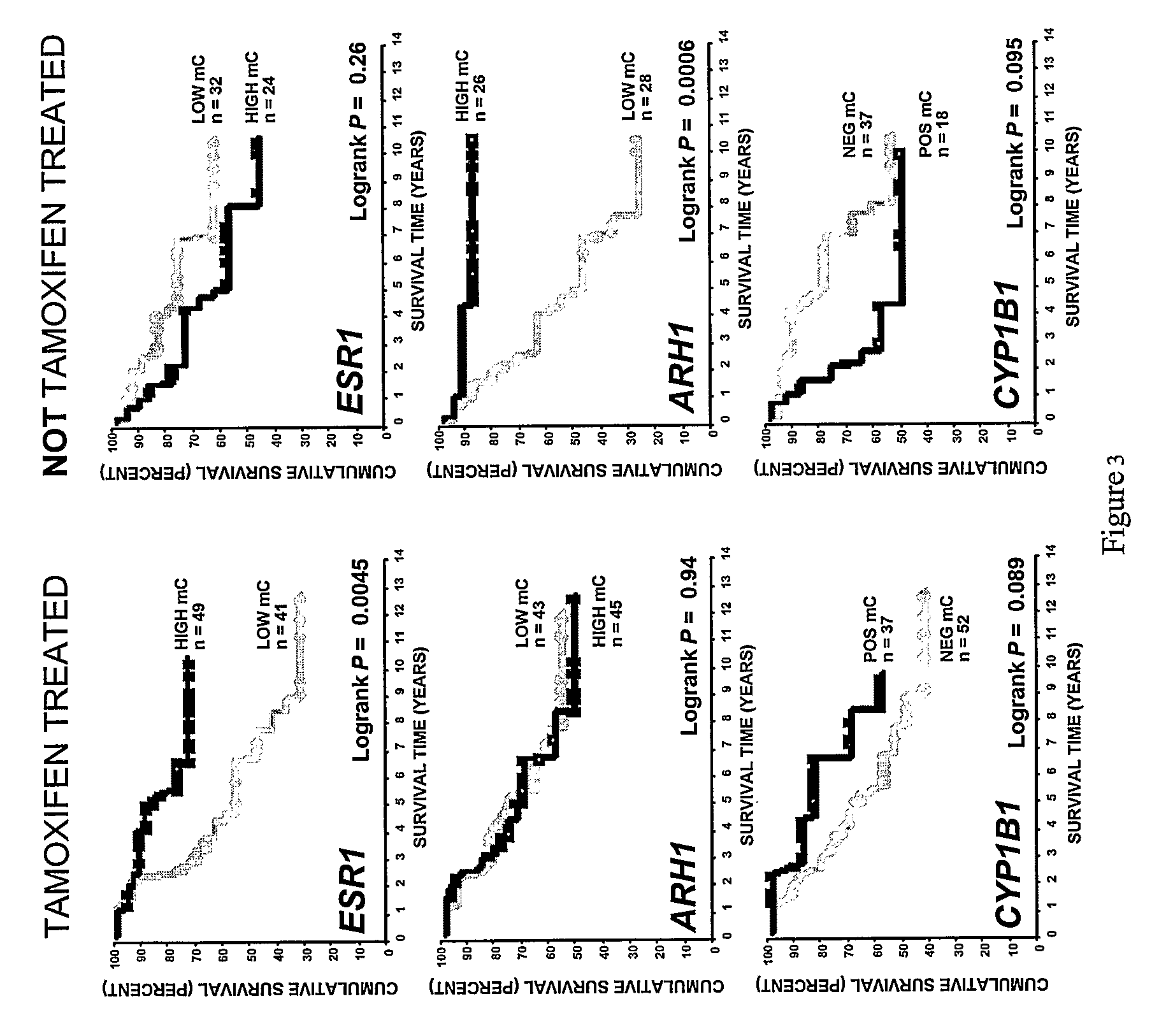Association of the DNA methylation profile of the CYP1B1 gene with response to adjuvant therapy in breast cancer
a cyp1b1 gene and gene methylation technology, applied in the field of dna methylation and hormone receptor biology, can solve the problems of poor compatibility with formalin fixation, use of cdna microarrays, and current controversy, and achieve the effect of improving survival and high levels of promoter methylation
- Summary
- Abstract
- Description
- Claims
- Application Information
AI Technical Summary
Benefits of technology
Problems solved by technology
Method used
Image
Examples
exemplary specific embodiments
[0110]Methods for predicting response to endocrine therapy. Particular aspects of the present invention provide a method for predicting response to endocrine treatment of a cell proliferative disorder of the breast tissue, comprising: isolating genomic DNA from a breast tissue sample obtained from a subject having a breast cell proliferative disorder; treating the genomic DNA, or a portion thereof, with one or more reagents suitable to distinguish between cytosine and 5-methylcytosine bases; and determining, based on the treating, a methylation state of at least one CpG dinucleotide of at least one gene sequence selected from the group consisting CYP1B1, ESR1, contiguous portions thereof, and sequences complementary thereto, wherein predicting a response to endocrine treatment of the cell proliferative disorder based on the determined methylation state is, at least in part, afforded. In particular embodiments, the at least one CpG dinucleotide is of at least one sequence selected fr...
example 1
Materials and Methods Used
[0127]Tissues. Tumor samples were retrieved from the tissue bank of the Department of Obstetrics and Gynecology, Innsbruck University Hospital (Innsbruck, Austria). Clinical, pathological and follow-up data are stored in a database in accordance with hospital privacy rules. Specimens were brought to the pathologist (E.M.-H.) immediately after resection, and part of the tissue was placed in liquid nitrogen and stored at −80° C. until lyophilization. A total of 148 patients with breast cancer treated at the Department of Obstetrics and Gynecology, University of Innsbruck, between 1989 and 2000, were included in this study. Patient characteristics are provided separately in TABLE 1 (Data Supplement 1).
[0128]Histopathological Analyses. All breast cancer specimens were reviewed by a single pathologist (E.M.-H.). HR positivity was defined as presence of ER and / or PR in >10% of tumor cells (immunohistochemistry was done for the 106 breast cancers) or ≧15 fmol / mg p...
example 2
MethyLight™ Analysis, Using 35 Informative DNA Methylation Markers, was Performed on 148 Primary Breast Carcinomas to Identify Novel Clustering Based on Methylation and HR Status
[0142]In this EXAMPLE, MethyLight™ analyses, using 35 informative DNA methylation markers, was performed on 148 primary breast carcinomas. The analyses revealed two major tumor clusters, based on distinct methylation profiles, that also differed significantly in their hormone receptor (HR) status.
[0143]Sixty-five (65) DNA methylation markers were initially pre-screened on a limited set of pilot samples (8 breast cancer cell lines and 8 breast carcinomas) to identify markers with sufficiently high methylation frequencies and / or methylation levels. From this initial set, 35 informative markers were selected for MethyLight™ analysis on 148 primary breast carcinomas obtained from the University Hospital of the University of Innsbruck, Austria (a summary of clinical characteristics shown in TABLE 1).
[0144]A semi-...
PUM
| Property | Measurement | Unit |
|---|---|---|
| size | aaaaa | aaaaa |
| temperature | aaaaa | aaaaa |
| temperature | aaaaa | aaaaa |
Abstract
Description
Claims
Application Information
 Login to View More
Login to View More - R&D
- Intellectual Property
- Life Sciences
- Materials
- Tech Scout
- Unparalleled Data Quality
- Higher Quality Content
- 60% Fewer Hallucinations
Browse by: Latest US Patents, China's latest patents, Technical Efficacy Thesaurus, Application Domain, Technology Topic, Popular Technical Reports.
© 2025 PatSnap. All rights reserved.Legal|Privacy policy|Modern Slavery Act Transparency Statement|Sitemap|About US| Contact US: help@patsnap.com



